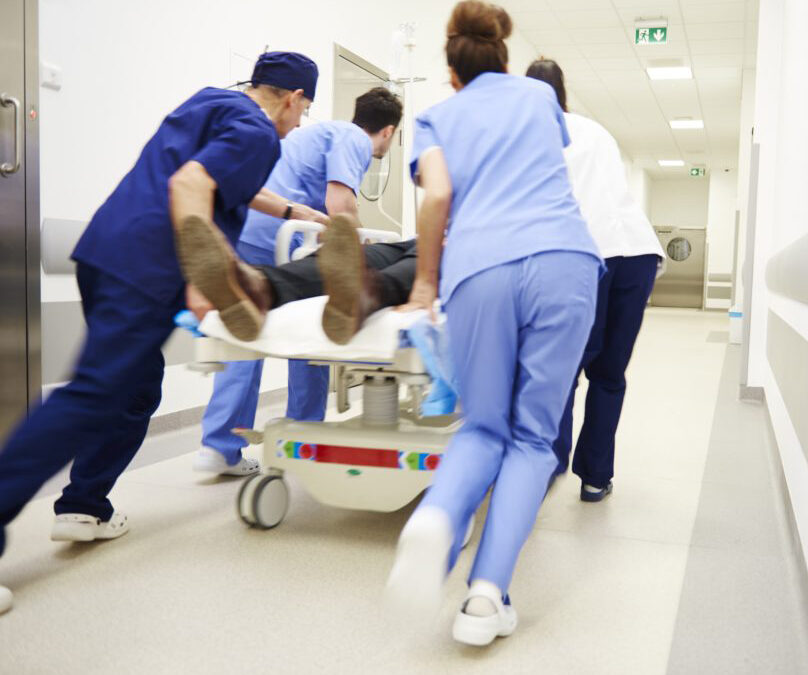By now most of you have heard about the tornados that ravaged Oak Grove and the surrounding areas last week. Many of you have probably even spent time refreshing your memory on tornado safety. Coincidentally, last week was also Severe Weather Awareness Week which has one simple goal: save lives.
As a part of Severe Weather Awareness Week, St. Mary’s Medical Center communicated information on various emergency preparedness topics each day to staff. In the wake of our recent weather, I wanted to take the opportunity to share some of those topics with the community.
First and foremost, weather disasters happen all the time. We tend to be ill-prepared because we think it won’t happen to us. Well, according to the Centre for Research on the Epidemiology of Disasters, an average of 32 percent of the world’s population was affected by a natural disaster between 1994 and 2013. That’s about 1 in 3 people. It could happen to any of us. So let’s get prepared.
One of the most crucial factors in an emergency is reliable communication. Receiving the latest warnings during severe weather is critical in making proper decisions. There are a number of tools available to stay informed of current conditions during weather-related disasters:
• National Weather Service warnings are communicated via television, radio, the internet and weather apps. Check them regularly with your preferred method.
• NIXLE Mass Notification Alerts: You can sign up to receive weather and other emergency alerts through NIXLE, the new mass notification system that Central Jackson County Emergency Management is now using. Text your ZIP code to 888-777 or go to nixle.com
for more information.
• NOAA Weather Radio, a service of the National Oceanic and Atmospheric Administration (NOAA), is one of the few devices available that can warn you of impending weather 24-hours a day. It provides continuous broadcasts of the latest weather information from local NWS offices. Most stations operate 24 hours a day and repeat weather messages every 4 to 6 minutes. Messages are routinely updated every 1 to 3 hours depending on weather conditions. During severe weather, NWS warnings will interrupt routine weather broadcasts with the warning. If your radio is set to alert mode, it will turn on automatically, set off an alarm, and broadcast the message. NOAA weather radios can be purchased at many places locally such as Price Chopper, Ace Hardware, Wal-Mart and others and typically cost less than $40
Stock up on supplies
Another, often neglected, critical item during an emergency is a Disaster Supply Kit. Be sure you have the following basics before impending storms as stores sell out quickly:
• Water – one gallon of water per person per day for at least three days
• Food – at least a three-day supply of non-perishable food (canned goods, granola bars, etc.) along with a manual can opener
• Battery-operated or hand crank radio, NOAA Weather Radio with tone alert, extra batteries
• Flashlight with extra batteries
• First aid kit
• Whistle (to signal for help)
• Dust mask (to help filter contaminated air)
• Plastic sheeting and duct tape to shelter-in-place if necessary
• Moist towelettes, garbage bags and plastic ties for personal sanitation
• Wrench or pliers to turn off utilities
• Cell phone with chargers or solar charger
• Shoes for each family member
• Contact lenses with supplies and glasses
Once you have gathered supplies for your basic kit, you may want to consider the following:
• Prescription medications and glasses
• Infant formula and diapers
• Pet food and water
• Cash, traveler’s checks and change
• Important documents (insurance, identification, bank information) and matches in a waterproof portable container
• Sleeping bag/warm blanket and complete change of clothes for each person
• Fire extinguisher
• Household chlorine bleach and a medicine dropper. When diluted, nine parts water to one-part bleach, can be used as a disinfectant. In extreme emergencies, you can use it to treat water by using 16 drops per gallon of water. Do not use scented, color-safe or bleaches with added cleaners.
• Personal and feminine hygiene products
• Mess kits, paper plates, utensils
Most items can be stored in a plastic storage tote in a basement or inside where easily retrieved. It is also a good idea to keep an emergency kit in your car.
Being prepared is key to dealing with and recovering from catastrophic or severe weather. Use last week’s weather and Severe Weather Awareness Week as a reminder to get prepared. Don’t be caught without critical needs to “weather the storm”.
— Collette Culver is the Regional Emergency Preparedness Manager for St. Mary’s Medical Center and can be reached at 816-228-5900.


